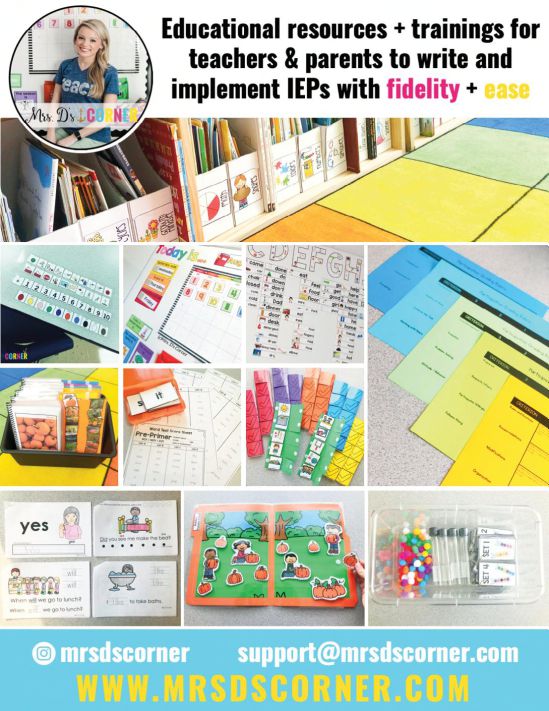- 3. Reach out to your child's teacher. Although it appears a few times in this article, it deserves its own item on this list, because it is so important. Even if your child's teacher is not new to your child this school year, it's always wise to reach out at the beginning of the year. Introduce yourself – or reintroduce yourself - and let the teacher know you're excited to work together this school year. You can also share the best way to reach you and more information about your child (especially, if it's a new-to-you-this-year teacher).
This might also be a good time to share any new information with your child's teacher. New at home services, new favorite foods, what the child did over the summer, things you may have noticed, and any data the team might need to help your child succeed this school year. What's important here is: you share what you feel comfortable sharing, and that you feel supported by your child's teacher and IEP team.
- 4. Buy school supplies your child needs. A lot of schools will provide you with a list of supplies needed per each grade level - but you know your child best. Even if you’re unsure of what to buy, reach out to your child’s teacher and see what supplies the teacher recommends. You may not need a 4” binder or 6 notebooks and 8 glue sticks. It’s always wise to check in before you buy… and don’t wait until the last minute to purchase school supplies. The good stuff always goes the quickest!
TIP: if you’re dreading school supply shopping, you can make an educational trip out of it for your child. Have a picture menu ready, or grab a flier and circle what is needed. Then have your child help you locate those items at the store. This is a great life skill to practice. You can take it one step further by practicing paying for the supplies, as well. Here are a few questions you can potentially use to practice money skills:
"Even if your child's teacher is not new to your child this school year, it's always wise to reach out at the beginning of the year. Introduce yourself and let the teacher know you're excited to work together this school year."
- Do you have enough money?
- How much is this?
- Is there a cheaper option?
- We need to stay on budget, is this on sale anywhere else?
- 5. Start your child back on a routine early. Depending on you and your child's current summer routine, it may be beneficial to start setting that alarm. If your child usually gets up at 7:30 am for school, but is waking up at 9 am over the summer, set your child's alarm for 8:30 to start. Then every two days or so move it back 10 minutes until you reach your child's school alarm time.
You'll also want to get your child back into some sort of school routine as well, and this might look different for each family. Routines might include getting ready in the morning, laying out clothes the night before, packing a lunch and snacks, packing up your backpack, etc.
- 6. Tour the school and meet the teacher. The closer the first day of school gets, means it might be time to tour your new school and meet the teacher. Contact your child's administrator or the child's teacher to set this up. This will help get your child ready for school and ease anxieties they may be feeling (and maybe your anxieties too!).
What's important to remember at back-to-school time, is your child is excited to go back to school to see friends and to learn. It is important that, to the best of your ability, you insure that your child (and you!) feel supported in this transition to a new grade level, and/or new school.•
ABOUT THE AUTHOR:

Stephanie is a dual-certified special education teacher, Master IEP Coach®, children's book author, and teacher mentor. She has a passion for creating engaging, adapted resources for teachers and students with disabilities, and is self-proclaimed #datanerd. She understands that not everyone will love IEPs as much as she does, but it is her hope that with the appropriate training and resources, teachers will not only advocate harder for student services and supports, but also bridge the gap between teachers and families to foster a true IEP Team. She also provides professional development for teachers. You can connect with her at mrsdscorner.com and theintentionaliep.com. Stephanie is also a huge mental health advocate, sharing her experiences and struggles to let others know that you can survive the dark seasons and thrive in life and teaching with a mental illness.
